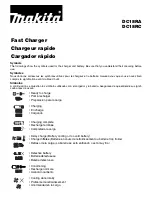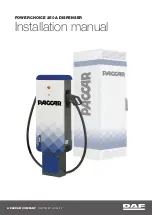
Charger Handbook
Version: Chg1.4
Energizer Battery Manufacturing Inc. | 800-383-7323 (USA-CAN) |
www.energizer.com
©2008 Energizer – Contents herein does not constitute a warranty of service, features or performance Page 1 of 4
NiMH Battery Chargers
Handbook and Application Manual
Energizer
®
“Compact Charger”
North America / Circa 2007
Introduction
Proper charging of Nickel-Metal Hydride (NiMH) batteries is
important to optimize performance in any product.
Energizer
®
offers a wide range of chargers to meet the needs of our
customers in terms of special features and price. The following
information is intended as a guide to the features offered by the
family of
Energizer
® chargers and their impact on battery
performance.
Many factors effect NiMH battery performance. Some of these
factors would include temperature, depth of discharge, charge
and discharge current, exposure to overcharge and over
discharge, storage conditions and age. The charger used can
impact several of these factors and can therefore impact overall
battery performance. In general, high capacity NiMH batteries
are more susceptible to over-charge which can reduce cycle life
especially in high rate chargers.
General Information
Compatibility:
Charging of nickel-cadmium batteries in
Energizer
® chargers is not recommended. The charge rate and
charge termination for our current line of chargers is designed for higher capacity NiMH batteries. NiMH
batteries made by other manufacturers can be charged in an
Energizer
® charger however we
recommend the use of
Energizer
® NiMH batteries.
General Guidelines:
- Do not attempt to charge primary (non-rechargeable) batteries (i.e. alkaline, carbon zinc or lithium)
- Do not mix battery chemistries
- Do not attempt to recharge alkaline rechargeable batteries using an
Energizer
® charger
- Do not mix fully charged and discharged batteries
- Do not mix batteries of different capacities or age
Calculating charge time needed:
For a fully discharged NiMH battery, an approximate charge time can be calculated using the following
formula: Battery mAh capacity X 120% ÷ mA charge rate = hours of charge. The battery capacity can
be found on the
Energizer
® battery label. The charge rate of the charger can be found on the Product
Datasheet. For example, a fully discharged 2450 mAh battery being charged at 200 mA would be fully
charged in (2450 mAh X 120% ÷ 200 mA) ~15 hours.
Charge Control
Energizer
® uses three basic techniques for charge control and termination. They are continuous, timer
and smart chargers. Each of these techniques is discussed in detail in the following sections.
Continuous Low Rate Charge:
This type of charger relies on user management of the charge time. See Calculating Charge Time
Needed in the previous section. The charger will charge the batteries as long as the charger is plugged
in and the batteries are installed.
Characteristics:
- Typically least expensive
- Slow charge is generally good for battery cycle life
- Long charge times (typically greater than 12 hours)
- Low charge rates used in this type to limit the effects of overcharging
- No protection from charging primary (non-rechargeable) batteries
- Batteries will be potentially overcharged if not properly managed by user
Contents
Introduction
General
Information
Charge Control
“Smart” Charger
Control Techniques
Cost to Charge
(electricity)
Summary
Glossary






















